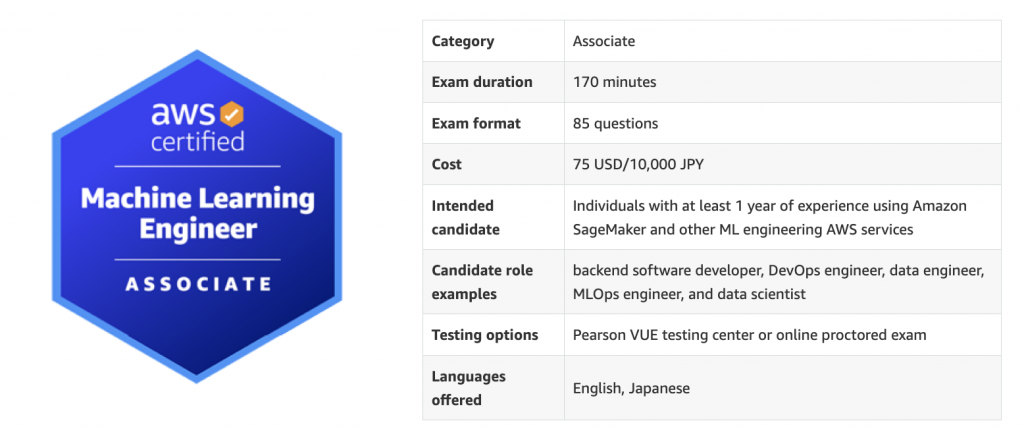All Categories
Featured
Table of Contents
- – The Ultimate Guide To Machine Learning Course
- – 8 Easy Facts About Certificate In Machine Lear...
- – 3 Simple Techniques For Machine Learning Is S...
- – Excitement About Machine Learning In Production
- – Master's Study Tracks - Duke Electrical & Co...
- – The Greatest Guide To Should I Learn Data Sc...
You probably understand Santiago from his Twitter. On Twitter, every day, he shares a lot of practical things concerning maker discovering. Alexey: Before we go into our main topic of moving from software engineering to equipment learning, perhaps we can begin with your history.
I went to college, got a computer scientific research degree, and I started developing software application. Back after that, I had no concept about equipment learning.
I understand you have actually been making use of the term "transitioning from software application engineering to artificial intelligence". I like the term "including to my ability the device knowing abilities" more because I believe if you're a software program designer, you are already giving a great deal of worth. By integrating equipment understanding now, you're enhancing the impact that you can have on the industry.
Alexey: This comes back to one of your tweets or possibly it was from your program when you contrast 2 approaches to discovering. In this case, it was some problem from Kaggle regarding this Titanic dataset, and you just learn exactly how to address this problem using a details device, like decision trees from SciKit Learn.
The Ultimate Guide To Machine Learning Course
You initially discover mathematics, or straight algebra, calculus. When you recognize the mathematics, you go to machine understanding concept and you learn the concept.
If I have an electric outlet here that I require replacing, I do not wish to most likely to university, invest 4 years comprehending the math behind power and the physics and all of that, simply to transform an outlet. I prefer to start with the outlet and find a YouTube video that assists me go through the issue.
Santiago: I truly like the concept of beginning with an issue, trying to throw out what I understand up to that issue and recognize why it doesn't work. Order the tools that I require to solve that issue and start digging deeper and deeper and much deeper from that point on.
Alexey: Possibly we can chat a little bit concerning finding out resources. You stated in Kaggle there is an intro tutorial, where you can get and find out exactly how to make choice trees.
The only demand for that training course is that you understand a little bit of Python. If you go to my account, the tweet that's going to be on the top, the one that claims "pinned tweet".
8 Easy Facts About Certificate In Machine Learning Shown

Even if you're not a developer, you can begin with Python and work your way to more device knowing. This roadmap is concentrated on Coursera, which is a platform that I truly, really like. You can examine all of the courses free of charge or you can pay for the Coursera registration to get certificates if you wish to.
That's what I would do. Alexey: This returns to one of your tweets or maybe it was from your course when you compare 2 approaches to discovering. One strategy is the issue based approach, which you just spoke about. You find a trouble. In this situation, it was some trouble from Kaggle concerning this Titanic dataset, and you just discover just how to resolve this problem using a certain tool, like choice trees from SciKit Learn.

You initially find out math, or linear algebra, calculus. After that when you understand the math, you go to artificial intelligence theory and you learn the concept. Then 4 years later, you ultimately concern applications, "Okay, how do I use all these four years of math to resolve this Titanic problem?" Right? In the previous, you kind of save yourself some time, I think.
If I have an electric outlet here that I require replacing, I do not want to most likely to college, invest four years recognizing the mathematics behind electrical power and the physics and all of that, simply to change an outlet. I would certainly rather start with the outlet and locate a YouTube video clip that helps me undergo the issue.
Negative analogy. You obtain the idea? (27:22) Santiago: I truly like the idea of beginning with a trouble, trying to throw out what I recognize approximately that issue and recognize why it doesn't function. Then grab the tools that I require to address that issue and start digging deeper and much deeper and deeper from that factor on.
To make sure that's what I generally recommend. Alexey: Possibly we can talk a bit concerning finding out sources. You stated in Kaggle there is an introduction tutorial, where you can obtain and find out exactly how to make decision trees. At the start, prior to we began this interview, you mentioned a pair of books.
3 Simple Techniques For Machine Learning Is Still Too Hard For Software Engineers
The only demand for that training course is that you know a little bit of Python. If you're a designer, that's a great beginning point. (38:48) Santiago: If you're not a designer, then I do have a pin on my Twitter account. If you go to my profile, the tweet that's mosting likely to get on the top, the one that claims "pinned tweet".
Also if you're not a developer, you can begin with Python and work your means to even more device learning. This roadmap is focused on Coursera, which is a platform that I truly, really like. You can audit all of the training courses totally free or you can spend for the Coursera registration to obtain certificates if you wish to.
Excitement About Machine Learning In Production
Alexey: This comes back to one of your tweets or maybe it was from your training course when you contrast two strategies to discovering. In this situation, it was some problem from Kaggle about this Titanic dataset, and you just find out just how to solve this trouble using a specific device, like choice trees from SciKit Learn.

You initially find out mathematics, or straight algebra, calculus. When you know the math, you go to maker understanding concept and you find out the theory.
If I have an electrical outlet here that I need replacing, I do not want to go to university, invest 4 years understanding the math behind electrical energy and the physics and all of that, just to alter an electrical outlet. I would certainly instead start with the electrical outlet and discover a YouTube video that helps me experience the issue.
Negative analogy. However you understand, right? (27:22) Santiago: I truly like the idea of beginning with a trouble, attempting to toss out what I know up to that trouble and comprehend why it does not function. Get hold of the devices that I need to address that problem and start digging deeper and deeper and much deeper from that point on.
That's what I generally advise. Alexey: Possibly we can speak a bit about learning resources. You pointed out in Kaggle there is an introduction tutorial, where you can get and find out exactly how to choose trees. At the beginning, prior to we started this interview, you pointed out a pair of publications also.
Master's Study Tracks - Duke Electrical & Computer ... Things To Know Before You Buy
The only demand for that program is that you know a little bit of Python. If you go to my account, the tweet that's going to be on the top, the one that says "pinned tweet".
Also if you're not a developer, you can begin with Python and work your means to even more maker learning. This roadmap is concentrated on Coursera, which is a system that I actually, actually like. You can examine all of the programs free of cost or you can pay for the Coursera subscription to obtain certificates if you wish to.
That's what I would certainly do. Alexey: This returns to among your tweets or possibly it was from your course when you contrast 2 strategies to knowing. One method is the problem based approach, which you just talked about. You locate a problem. In this situation, it was some issue from Kaggle regarding this Titanic dataset, and you simply discover how to solve this issue utilizing a certain device, like decision trees from SciKit Learn.
You initially find out mathematics, or linear algebra, calculus. When you understand the mathematics, you go to machine understanding concept and you learn the concept. After that 4 years later, you lastly come to applications, "Okay, how do I make use of all these 4 years of mathematics to address this Titanic issue?" ? So in the former, you type of conserve on your own time, I assume.
The Greatest Guide To Should I Learn Data Science As A Software Engineer?
If I have an electrical outlet right here that I require changing, I don't intend to most likely to college, invest four years recognizing the math behind electrical power and the physics and all of that, simply to change an outlet. I prefer to start with the outlet and discover a YouTube video that assists me undergo the problem.
Santiago: I truly like the concept of starting with a trouble, attempting to toss out what I know up to that problem and recognize why it doesn't function. Get hold of the tools that I need to resolve that trouble and start digging much deeper and deeper and deeper from that factor on.

That's what I typically recommend. Alexey: Maybe we can chat a little bit about finding out resources. You stated in Kaggle there is an introduction tutorial, where you can get and discover how to make decision trees. At the beginning, prior to we started this interview, you pointed out a pair of publications too.
The only demand for that course is that you understand a little bit of Python. If you go to my profile, the tweet that's going to be on the top, the one that states "pinned tweet".
Even if you're not a developer, you can start with Python and function your way to more device learning. This roadmap is concentrated on Coursera, which is a platform that I really, really like. You can examine every one of the programs free of charge or you can pay for the Coursera registration to get certifications if you desire to.
Table of Contents
- – The Ultimate Guide To Machine Learning Course
- – 8 Easy Facts About Certificate In Machine Lear...
- – 3 Simple Techniques For Machine Learning Is S...
- – Excitement About Machine Learning In Production
- – Master's Study Tracks - Duke Electrical & Co...
- – The Greatest Guide To Should I Learn Data Sc...
Latest Posts
What Faang Companies Look For In Data Engineering Candidates
How To Own Your Next Software Engineering Interview – Expert Advice
How To Prepare For A Software Developer Interview – Key Strategies
More
Latest Posts
What Faang Companies Look For In Data Engineering Candidates
How To Own Your Next Software Engineering Interview – Expert Advice
How To Prepare For A Software Developer Interview – Key Strategies